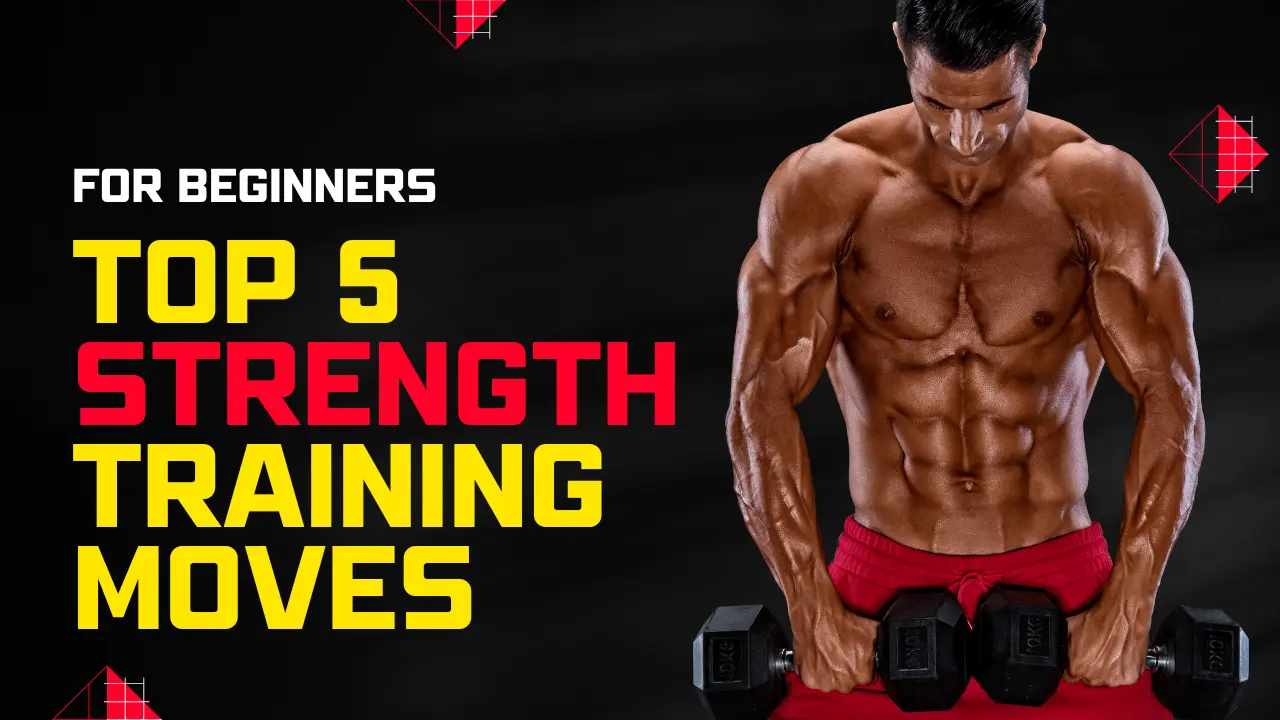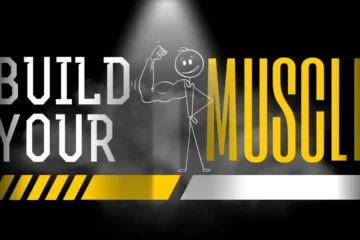Top 5 Strength Training Moves for Beginners

Strength training can feel intimidating at first, especially if you’re new to fitness or have spent most of your workouts doing cardio. But the truth is, strength training is one of the most effective ways to build muscle, burn fat, and boost overall health. The key is to start simple—with fundamental, compound movements that work multiple muscle groups and lay a solid foundation for progress.
Strength training can feel exciting. Imagine lifting weights and setting PR (personal record) after PR. Whether your goal is to build lean muscles, burn fat, or boost overall health. The start can be exciting and seem simple. But once you lift, you will get a reality check. Hence, to prevent you from all this and to make your lifting experience enjoyable.
In this post, we’ll explore the top 5 strength training moves every beginner should master. The best part is all the mentioned exercises require minimal equipment, promote functional fitness, and can be scaled up as you gain confidence and strength.
Why Strength Training Matters
The question no one talks about is why. What I believe is before diving into the exercises, it’s important to understand why it matters:
Boosts Metabolism: As strength training will help you make muscle, which requires a high metabolism rate, technically it will help me with fat loss.
Improves Bone Density: Strength training makes bones stronger and reduces the risk of osteoporosis.
Enhances Functional Movement: It makes your everyday activities easier as you build strength.
Increases Confidence: It will eventually make your posture stronger and make you confident.
Prevents Injury: The strength training makes muscles strong and reduces the risk of injury.
Now let’s break down the five foundational moves every beginner should include in their training routine.
1. Squat
Muscles Worked: Quads, hamstrings, glutes, core
The science: The squat makes your overall lower body stronger, enhances mobility, and maintains balance. It focuses on quads, hamstrings, glutes, and core.
How to Do It:
1. Stand with feet shoulder-width apart.
2. Stay straight.
3. Bend your knees and lower your hips as if you are sitting in the chair.
4. Go as low as your mobility allows.
5. Then stand back and repeat the process for 20 reps and 2 sets.
Beginner Tips:
1. Don’t push harder. Just go down as much as your lower body allows.
2. If you find it harder, then use a chair.
Common Mistakes to Avoid:
1. Letting knees cave inward
2. Leaning too far forward
3. Lifting heels off the floor
2. Push-Up
Muscles Worked: Chest, shoulders, triceps, core
The science: Push-ups are the masterclass exercise for your upper body. It improves upper body pushing strength and teaches body control.
How to Do It:
1. Get in a plank position with your hands slightly wider than shoulder-width.
2. Keep your body in a straight line from head to heels.
3. Go lower till your chest nearly touches the ground.
4. Go back up to the starting position.
Beginner Tips:
1. If you find it difficult, then go for knee or wall push-ups.
2. Keep your core tight to avoid sagging hips.
Common Mistakes to Avoid:
1. Flaring elbows too wide
2. Letting hips drop or pike
3. Not going through the full range of motion
Deadlift
Muscles Worked: Glutes, hamstrings, lower back, core
The science: The deadlift strengthens the entire posterior chain, keeping your hip hinge in proper working order.
How to Do It:
1. Stand with feet hip-width apart.
2. Hold a dumbbell or kettlebell, keep your back straight, and hinge at the hips.
3. Slowly lower the weight while keeping it close to your body.
4. Drive through your heels and squeeze your glutes to return to standing.
Beginner Tips:
1. Focus on mastering the hip hinge using a broomstick.
2. Start with low weight; form is key.
Common Mistakes to Avoid:
1. Rounding the lower back
2. Using the back instead of the hips
3. Letting the weight drift away from your body
4. Bent-Over Row
Muscles Worked: Upper and mid-back, biceps, core
The science: It keeps your back strong, supports posture, balances pushing movements, and does not forget to protect the shoulders.
How to Do It:
1. Hold dumbbells with palms facing you.
2. Hinge at the hips and lean your torso forward at a 45-degree angle.
3. Keep your back flat and core engaged.
4. Pull the weight inwards and squeeze your shoulders.
5. Lower under control.
Beginner Tips:
1. Focus on form and start with lighter weight.
2. Make sure to keep your elbows close to your body.
Common Mistakes to Avoid:
1. Using momentum to lift
2. Rounding the shoulders
3. Standing too upright
5. Plank
Muscles Worked: Core, shoulders, glutes
The science: Planks focus on building core strength and body stability without any movement, which improves posture and protects the spine.
How to Do It:
1. Start in a forearm plank position.
2. Keep your body in a straight line.
3. Engage your core and glutes.
4. Hold for 20–60 seconds without letting hips drop or rise.
Beginner Tips:
1. If you find it difficult, then start with a short hold for, like, 20 seconds.
2. To maintain form, drop your knees if needed.
Common Mistakes to Avoid:
1. Arching or rounding the back
2. Letting hips sag
3. Looking up
How to Structure a Beginner Strength Workout
Below is the sample full-body strength workout session including only 5 moves:
Warm-Up (5 minutes):
- Jumping jacks
- Arm circles
- Bodyweight lunges
- Hip openers
Workout (3 Rounds):
1. Bodyweight Squat—12 reps
2. Incline Push-Up—10 reps
3. Dumbbell Deadlift—10 reps
4. Bent-Over Row—12 reps
5. Plank Hold—30 seconds
Rest: 60 seconds between rounds
Cool Down (5 minutes):
- Hamstring stretch
- Child’s pose
- Shoulder stretch
- Deep breathing
Tips for Long-Term Success
- Focus on form: Always prioritize proper technique and form over lifting heavier.
- Progress gradually: Try to increase reps, sets, or resistance over time, not in just a few days. You can take at least a week.
- Track your workouts: Use a digital app to track your progress.
- Be consistent: You don’t try to become the Hulk; stay consistent. Strength gains come from regular practice.
Final Thoughts
Strength training can be complicated to some, but by mastering these five basic movements, you will end up with a strong foundation that supports long-term fitness.
All the exercise contains real-life movement patterns, which not only help you build some strength but also make you confident in every aspect, whether you lift some weight at home or flex some muscle at the office.
Remember: Focus on consistency, listen to your body, and enjoy the process of becoming stronger.



0 Comments